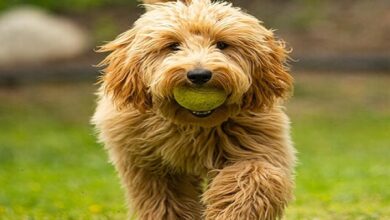
Keeping your canine companion both happy and healthy requires the right balance of exercise. However, determining the ‘right’ amount is not always straightforward. It can depend on various factors such as the dog’s age, breed, health status, and individual personality.
Let’s delve into the specifics of how to find the right exercise balance for your dog.
Understanding Your Dog’s Exercise Needs
To start, dogs are as diverse as humans when it comes to their exercise needs. The breed of the dog often dictates the amount of physical activity required. For instance, high-energy breeds like Border Collies, Labrador Retrievers, and Australian Shepherds typically need more exercise compared to breeds like Mini Groodle or Basset Hounds, who are generally more relaxed.
If you have a puppy in Sydney, you’ll likely notice that they are filled with energy and very curious about their environment. As such, they often require shorter bursts of activity multiple times a day. As dogs age, their exercise needs change. Senior dogs still need physical activity to maintain muscle tone and joint health, but the intensity and duration should be reduced.
Crafting the Perfect Exercise Routine
Designing an appropriate exercise routine for your dog can be fun and rewarding. Consider activities that engage their instincts like fetching, swimming, or agility training. Incorporating training within these activities can also help manage their energy and promote good behaviour.
Here’s how you can structure an effective and engaging routine:
Start with a Warm-up: As with humans, dogs benefit from warming up their muscles before a vigorous activity. Begin each exercise session with a short, relaxed walk or gentle play.
Daily Walks: Regardless of your dog’s energy level, daily walks should be a cornerstone of your routine. They provide both physical exercise and mental stimulation as your dog encounters new smells, sights, and sounds. Aim for at least one walk per day, but remember, more active breeds may require additional walking time or more frequent walks.
Engaging Activities: Next, consider what activities your dog enjoys. Some dogs love to play fetch, while others might enjoy games that engage their hunting instincts, like hide and seek with toys or treats. High-energy dogs often excel at agility or obedience training, which can be done at home or in a formal class setting. Swimming can be a fantastic low-impact exercise for dogs, particularly in hot weather or for breeds prone to joint issues.
Dog-to-Dog Interaction: If your dog is sociable and enjoys playing with others, consider incorporating playdates with other dogs, or visiting a local dog park into your routine. These interactions provide a unique form of physical and mental stimulation.
Adapting to Your Dog’s Needs: Listen to your dog’s needs and adapt the routine accordingly. If your dog is a senior or has health issues, they may require shorter, more frequent bouts of exercise. Conversely, a puppy or a high-energy breed might need additional playtimes throughout the day.
Cool-Down: Just like the warm-up, it’s important to end the exercise routine with a cool-down period. This might include a gentle walk or some quiet time to relax.
Consistency: Keep your dog’s exercise routine consistent. This helps them to understand what to expect and reduces anxiety. However, don’t forget to introduce some variety to keep the activities interesting and engaging.
Include Mental Stimulation: Physical exercise is just one piece of the puzzle. Mental exercise is just as important for a well-rounded routine. This could include puzzle toys, training sessions, or scent games.
Remember, it’s always advisable to consult with your vet when designing an exercise routine for your dog. They can take into account your dog’s overall health and advise on the best types of exercise for your pooch.
Recognizing Over- and Under-Exercise
Maintaining balance is key. Over-exercising a dog, especially puppies or older dogs, can lead to injuries and exhaustion. Symptoms can include excessive panting, lameness, or a reluctance to move. Some dogs, particularly working breeds, have high pain thresholds and may not show signs of discomfort, making it crucial for owners to monitor and limit activity levels.
Under-exercising a dog is equally problematic. Dogs who don’t get enough exercise can become obese, which brings a slew of health problems such as diabetes, heart disease, and joint issues. Moreover, lack of physical activity often leads to behavioural problems. Bored dogs may develop destructive habits like chewing, barking, or digging. They can also become anxious or overly excitable. Many dogs that are given up for adoption or rehomed simply need more stimulation and a bit of patience.
Conclusion
Every dog is unique and will have different exercise needs. The key is to observe your dog, understand their specific needs, and adjust their exercise routine accordingly. A well-exercised dog tends to be a well-behaved and happy dog. If in doubt, consult with a vet or a canine behaviourist.
Remember, exercise is more than just keeping your dog physically active. It’s about enriching their lives, bonding with them, and ensuring their overall well-being. As responsible dog owners, it’s our task to find the right balance that keeps our furry friends both healthy and content.





